Time | 8 weeks
Role | Designer & Researcher
Team | PM, Researcher, Content Strategist, Cross-Brand Designers
Revolutionizing Hotels.com Customer Support: Driving Chatbot Discoverability
Background
Expedia's Virtual Agent, utilized across the Expedia Group of companies, caters to customer’s self service needs, including bookings, cancellations, and flight changes. When COVID-19 disrupted the travel industry, Hotels.com faced a surge in call volumes due to trip cancellations. With call centers operating at limited capacity, customers faced extended wait times, while only a fraction used the available Virtual Agent.
Virtual Agent on Customer Service page
Problem
Rising travel restrictions during the pandemic led to a monumental travel cancellations and an increase in call volumes, resulting in days-long waiting periods for help from customer service. Despite the Virtual Agent's capabilities, only a small percentage of customers were leveraging its functionalities. Customers were unaware of the bot's presence and capabilities, causing users to struggle accessing it.
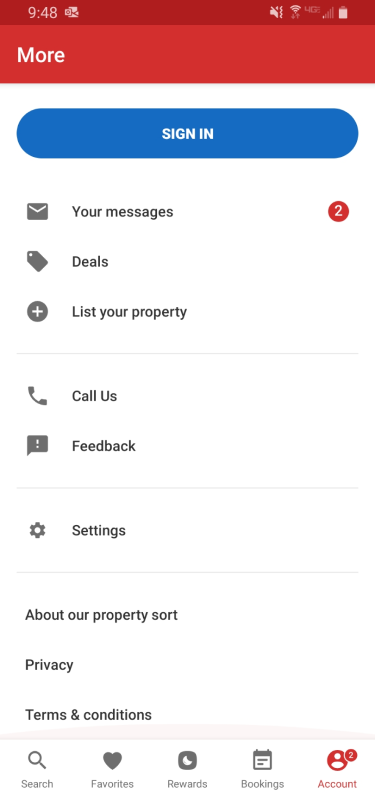
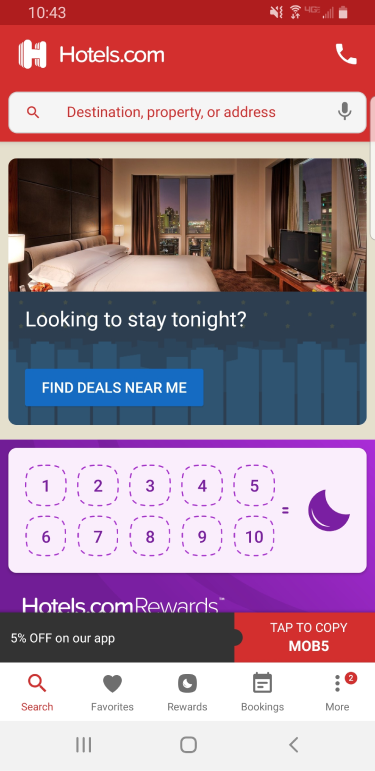
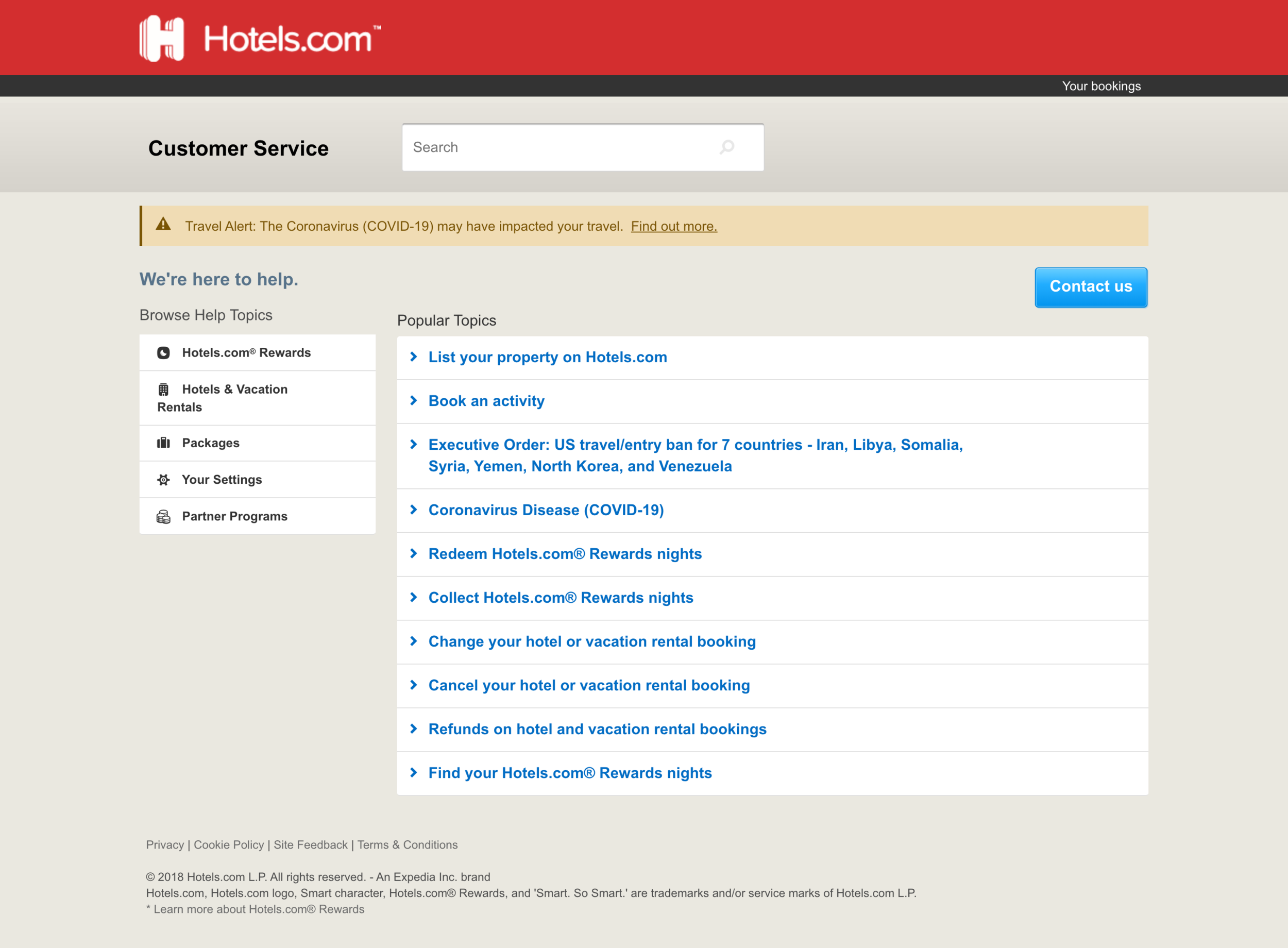
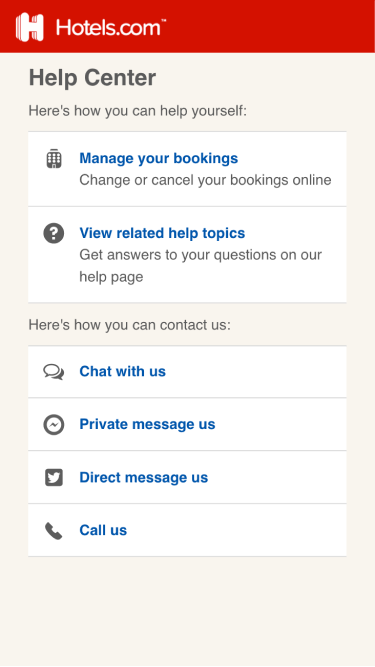
Above: Hotels.com Live Agent Call Support Experience
Target Audience
Primarily, frustrated travelers dealing with unexpected cancellations were the focus. Additionally, the project aimed to engage Hotels.com's internal team of directors, designers, and engineers.
Roles and Approach
Hotels.com heavily relied on live call center agents, reflecting in their mobile app and web designs. To pivot from this model, the challenge was to introduce chatbot entry points effectively. However, leadership held assumptions favoring live agents without empirical data but needed to adjust due to the impact of Covid restrictions.
Design Process
Conducting extensive research into entry point designs and competitive analyses across 25 sites provided a foundational understanding. Utilizing Figma, I crafted high-fidelity mockups exploring various entry point placements, including header and floating action button designs.
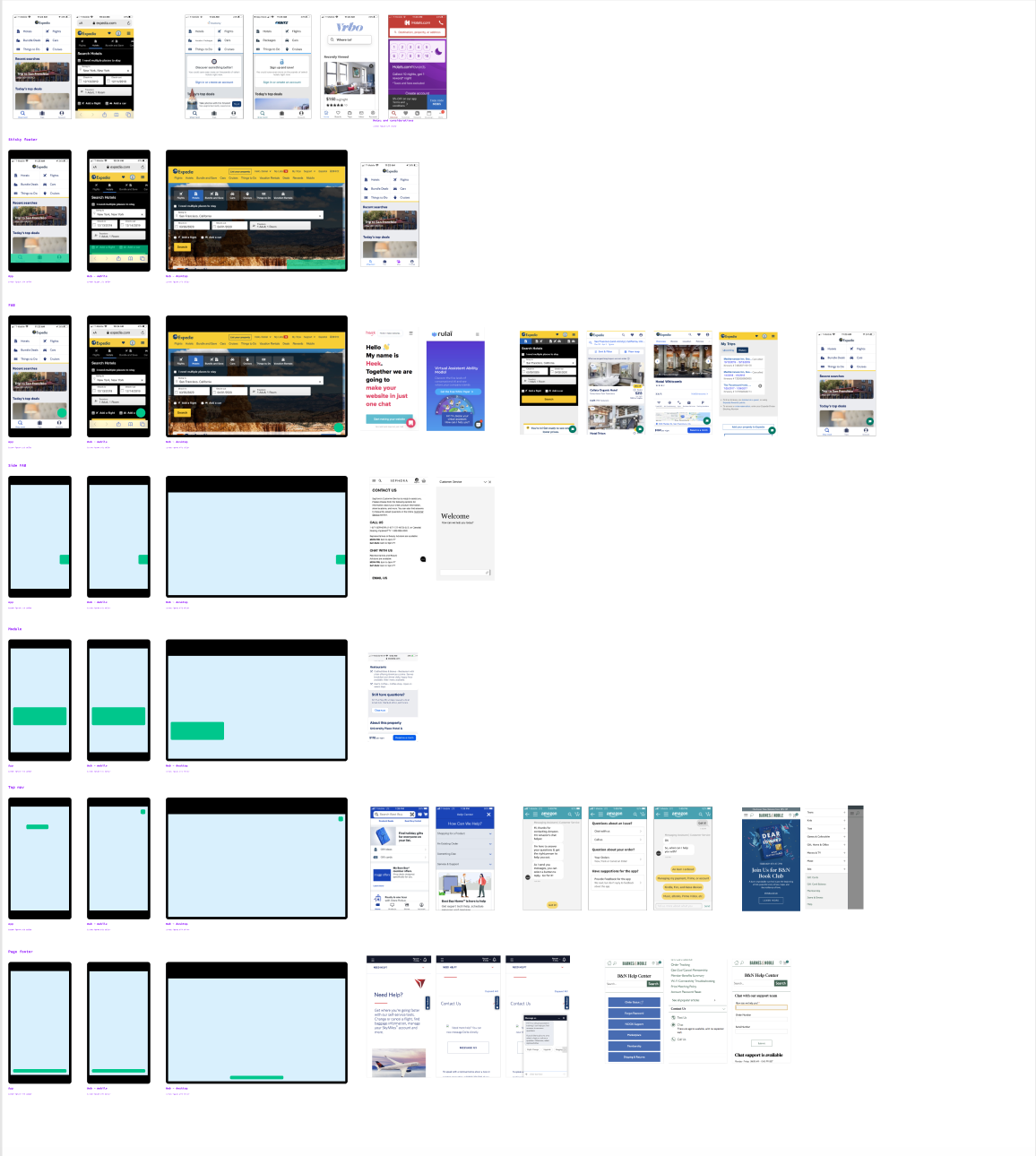
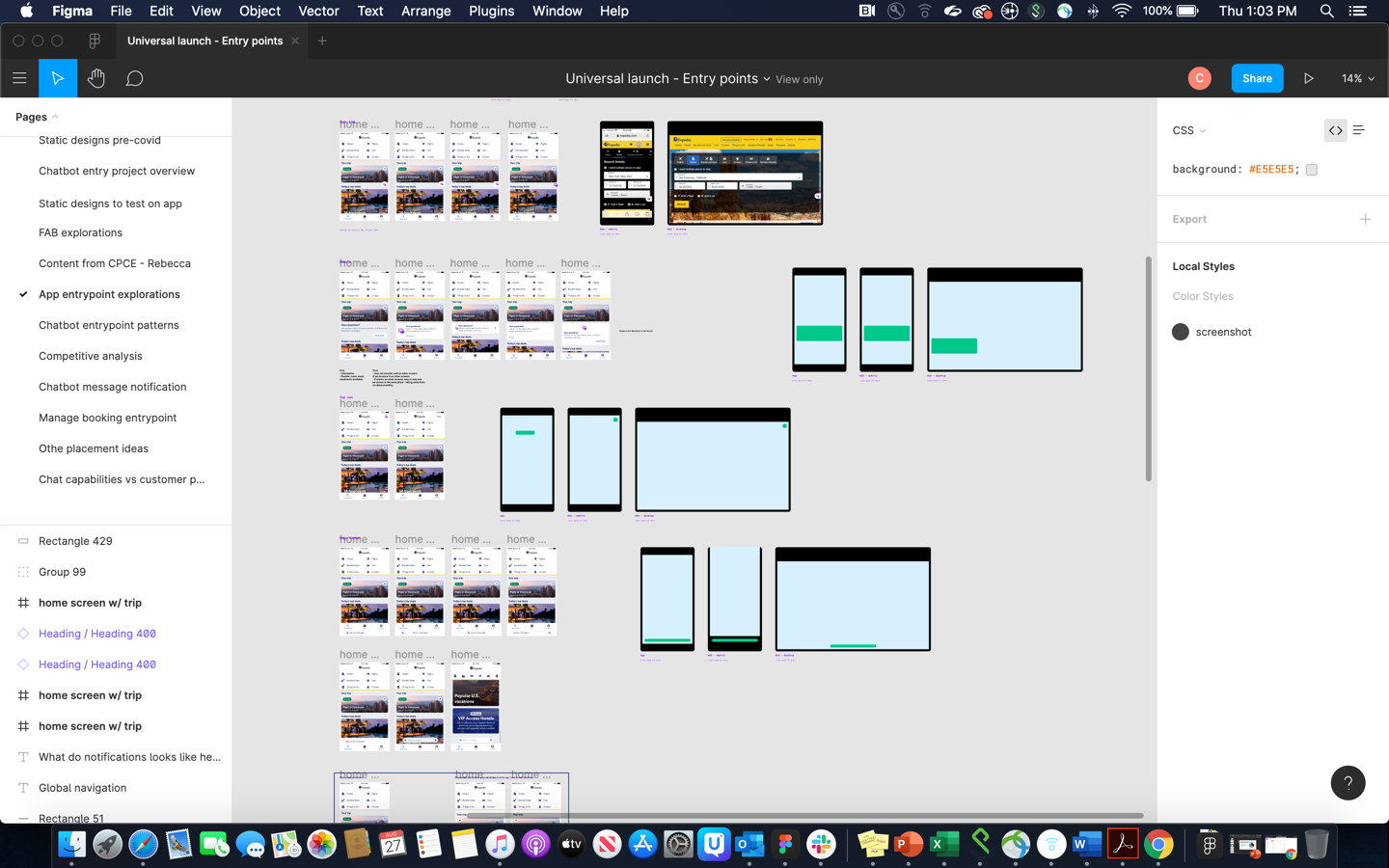


Above: competitive study and early design explorations
Design Exploration and Testing
Prototyping micro-interaction animations in After Effects and Figma helped orient customers to the chatbot. Collaborating with an Expedia researchers, we conducted A/B tests, uncovering customer unawareness regarding the bot's capabilities and difficulties locating it.

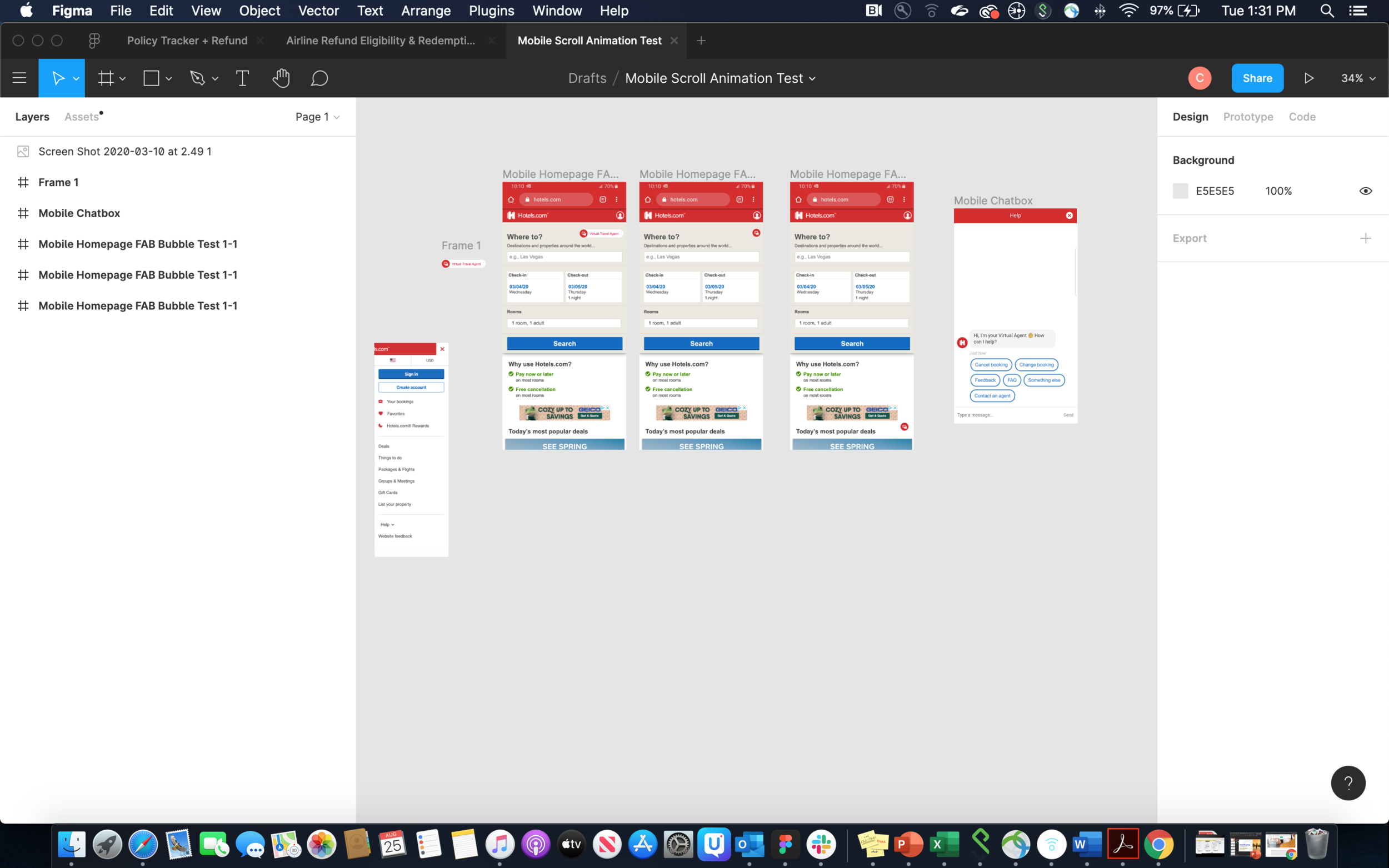
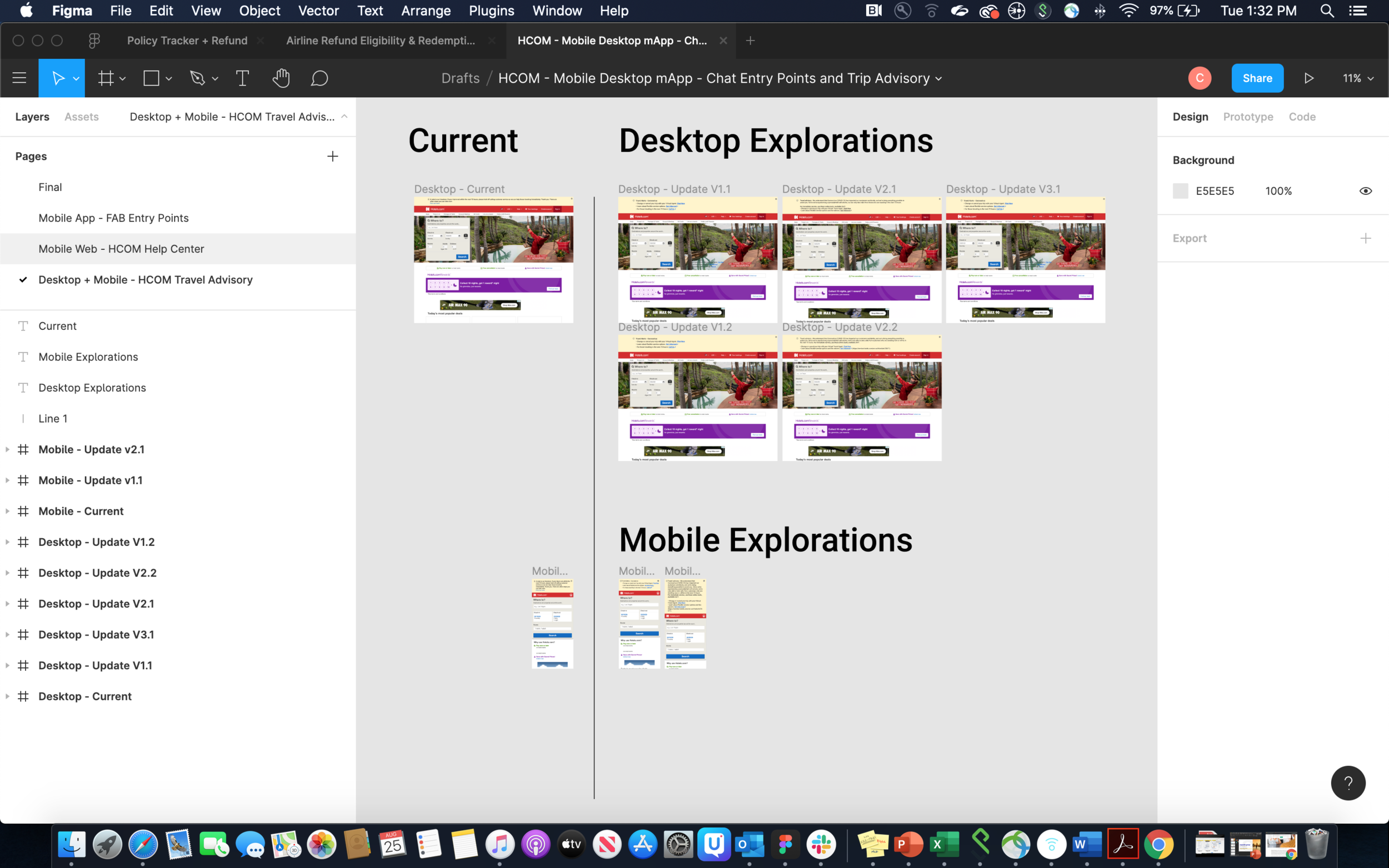
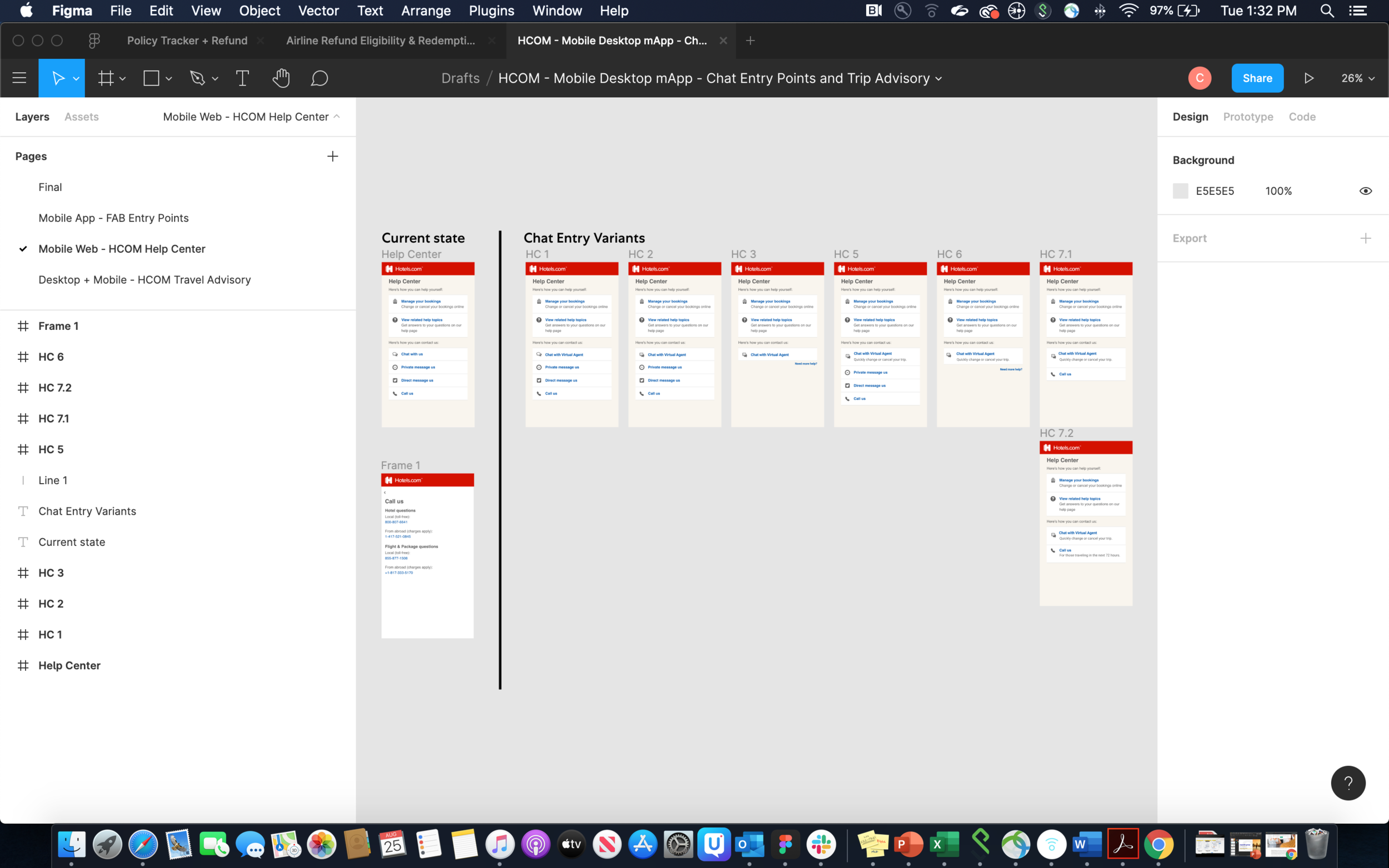
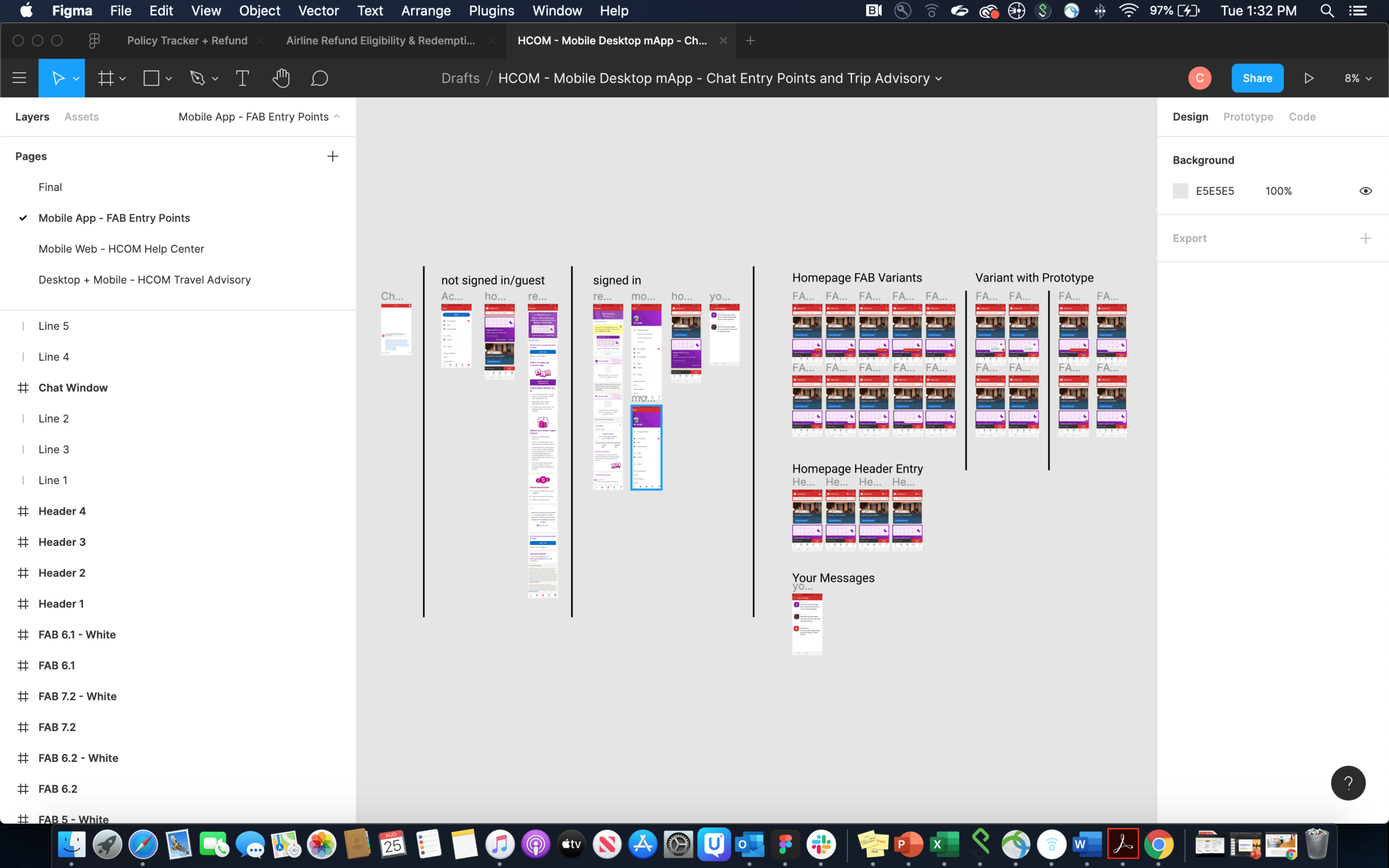
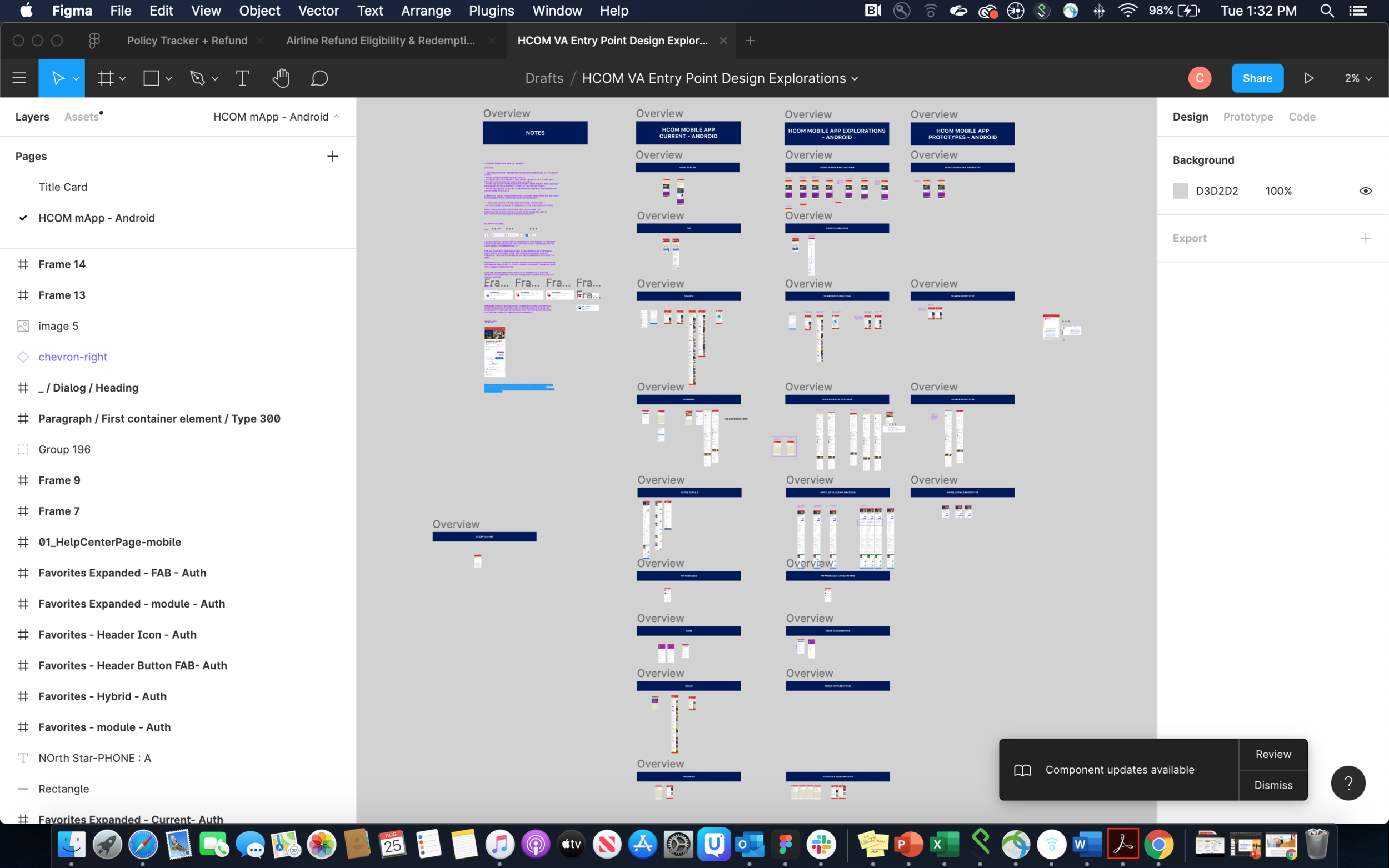
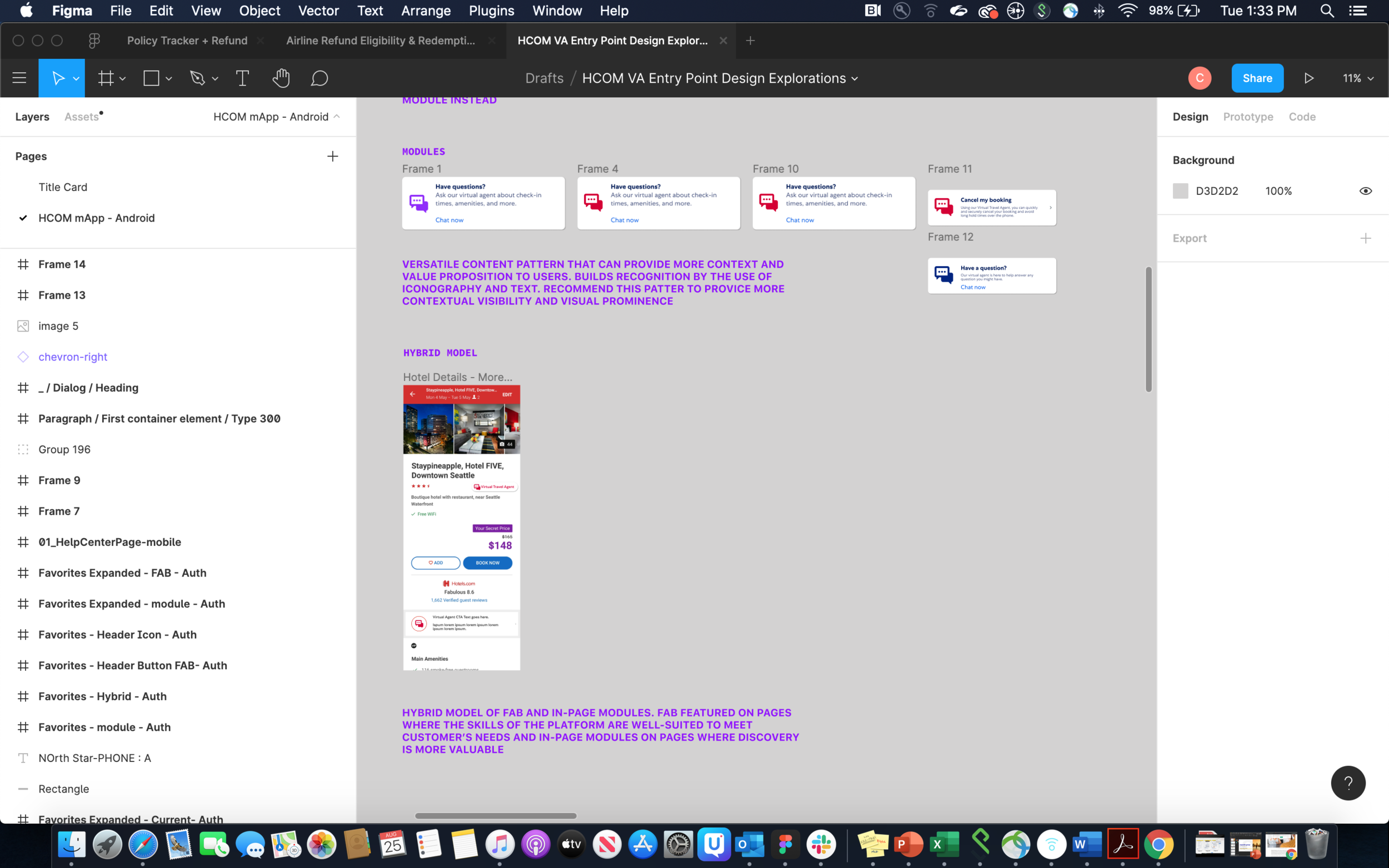
Above: high fidelity design explorations created with Figma
Recommendations and Implementation
Based on test findings, I proposed a floating action button and in-body CTA cards as entry points, driving traffic to the Virtual Agent. Collaborating with Hotels.com's mobile app design director and London counterpart, we refined recommendations and swiftly secured approval.
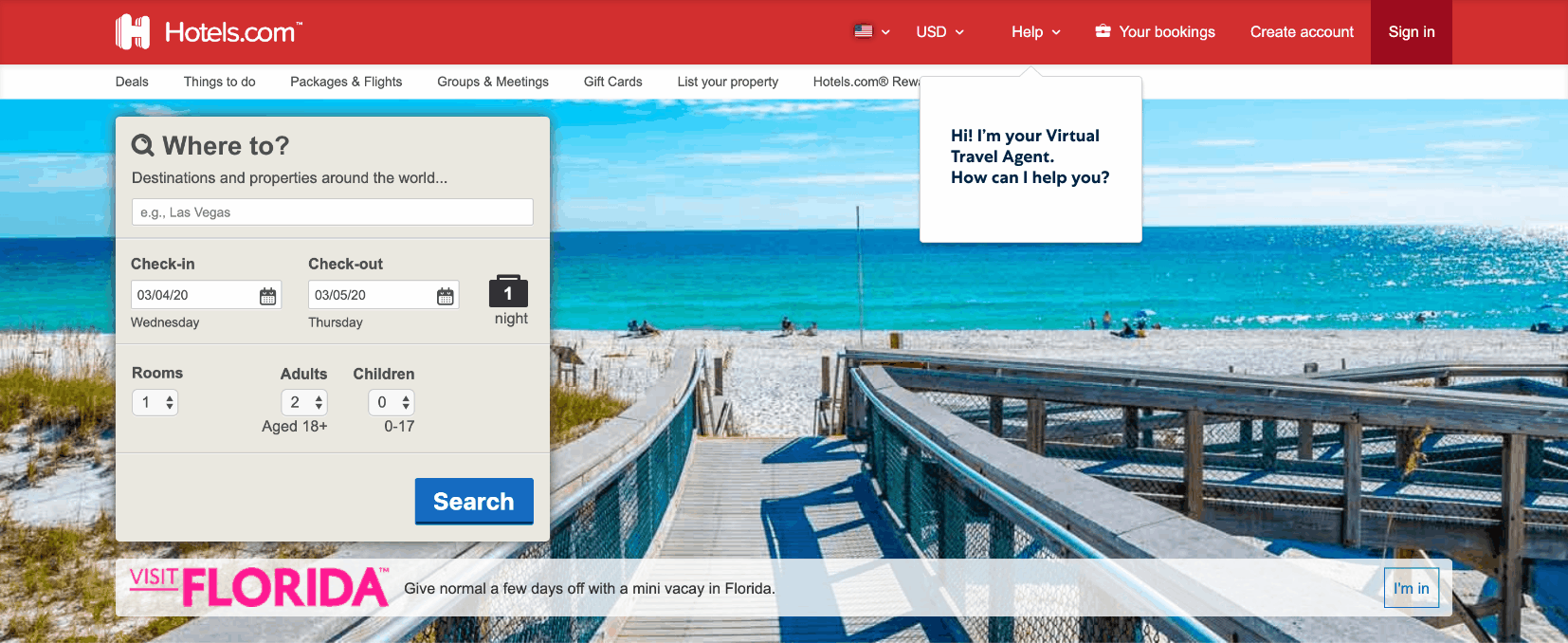
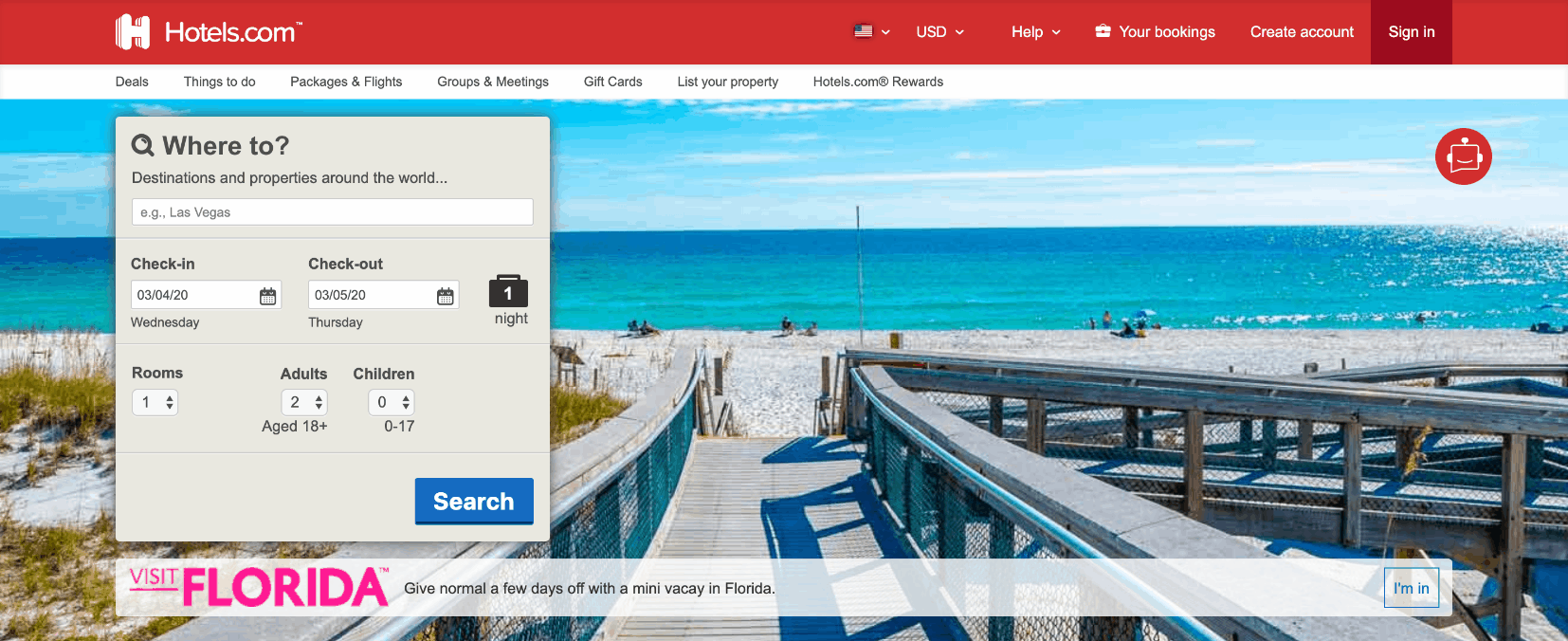



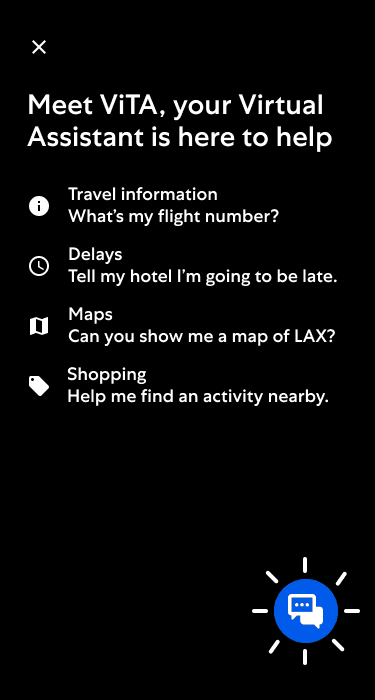
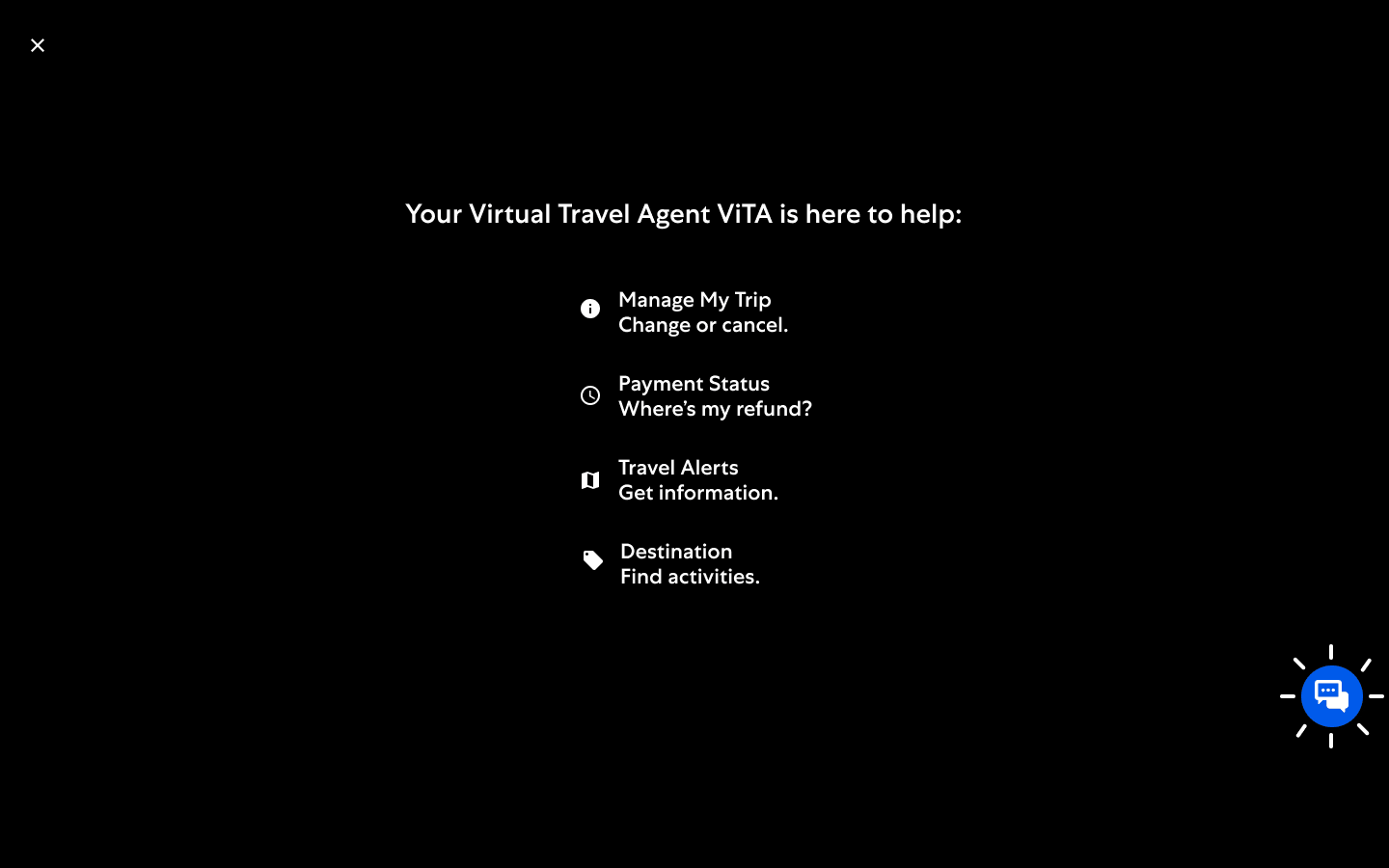
Above: Animate Entry Point Prototypes
Outcome and Impact
Following the implementation of new entry points on their customer service page, Hotels.com witnessed reduced call center volumes and increased chatbot usage for cancellations and inquiries. These enhancements redirected customers to the Virtual Agent first, decreasing reliance on call centers and improving customer engagement.
Customer Service Page with New Chatbot Entry Points
Extended Contributions
Post-implementation, I curated a brand-agnostic entry point best practices deck, shared across Expedia Group companies aiming to enhance their Virtual Agent experiences.





Above: Samples from Recommendation Deck
Conclusion
The successful launch of new chatbot access points on Hotels.com's customer service page facilitated an immediate decrease in call center volumes, an uptick in chatbot engagement, and speedier conflict resolution for customers. My ongoing consultancy ensured a seamless transition toward enhancing customer experiences across the Expedia Group of companies. This project underlines the power of strategic design solutions in driving impactful and scalable improvements in user engagement and service efficiency.
![HCOM mApp VA Entry Points [V2].007.jpeg](https://images.squarespace-cdn.com/content/v1/5b3001cbd274cbceea3780d4/1598590546946-5J84N9ZEKAKI018HZWYG/HCOM+mApp+VA+Entry+Points+%5BV2%5D.007.jpeg)
![HCOM mApp VA Entry Points [V2].009.jpeg](https://images.squarespace-cdn.com/content/v1/5b3001cbd274cbceea3780d4/1598590543903-RRRNJ6LXGPGDRHOICA7L/HCOM+mApp+VA+Entry+Points+%5BV2%5D.009.jpeg)
![HCOM mApp VA Entry Points [V2].010.jpeg](https://images.squarespace-cdn.com/content/v1/5b3001cbd274cbceea3780d4/1598590546492-Q3I5DSZHD0I8MW6R5F9T/HCOM+mApp+VA+Entry+Points+%5BV2%5D.010.jpeg)
![HCOM mApp VA Entry Points [V2].011.jpeg](https://images.squarespace-cdn.com/content/v1/5b3001cbd274cbceea3780d4/1598590547806-7QTFSZHY1MIEBUBKPTYL/HCOM+mApp+VA+Entry+Points+%5BV2%5D.011.jpeg)
![HCOM mApp VA Entry Points [V2].012.jpeg](https://images.squarespace-cdn.com/content/v1/5b3001cbd274cbceea3780d4/1598590547755-CDYS7IFH26ZB1NYVXE7E/HCOM+mApp+VA+Entry+Points+%5BV2%5D.012.jpeg)
![HCOM mApp VA Entry Points [V2].018.jpeg](https://images.squarespace-cdn.com/content/v1/5b3001cbd274cbceea3780d4/1598590548732-MI82M5MQ8MMCW7XMQVUI/HCOM+mApp+VA+Entry+Points+%5BV2%5D.018.jpeg)
![HCOM mApp VA Entry Points [V2].019.jpeg](https://images.squarespace-cdn.com/content/v1/5b3001cbd274cbceea3780d4/1598590548870-EX9453P5CMIDENOTQGEX/HCOM+mApp+VA+Entry+Points+%5BV2%5D.019.jpeg)
![HCOM mApp VA Entry Points [V2].020.jpeg](https://images.squarespace-cdn.com/content/v1/5b3001cbd274cbceea3780d4/1598590551339-U4PT1L954GUYUEMZHOAQ/HCOM+mApp+VA+Entry+Points+%5BV2%5D.020.jpeg)
![HCOM mApp VA Entry Points [V2].021.jpeg](https://images.squarespace-cdn.com/content/v1/5b3001cbd274cbceea3780d4/1598590551640-ALFB6IUO40SJZU6WX7QU/HCOM+mApp+VA+Entry+Points+%5BV2%5D.021.jpeg)
![HCOM mApp VA Entry Points [V2].022.jpeg](https://images.squarespace-cdn.com/content/v1/5b3001cbd274cbceea3780d4/1598590552511-E0CAD2V4TFQWA5EC8B1N/HCOM+mApp+VA+Entry+Points+%5BV2%5D.022.jpeg)
![HCOM mApp VA Entry Points [V2].024.jpeg](https://images.squarespace-cdn.com/content/v1/5b3001cbd274cbceea3780d4/1598590552706-X4W5OLJLHE7M2LF5CNA2/HCOM+mApp+VA+Entry+Points+%5BV2%5D.024.jpeg)
![HCOM mApp VA Entry Points [V2].025.jpeg](https://images.squarespace-cdn.com/content/v1/5b3001cbd274cbceea3780d4/1598590553470-6A32BRGXH4RC8UVICU0H/HCOM+mApp+VA+Entry+Points+%5BV2%5D.025.jpeg)
![HCOM mApp VA Entry Points [V2].026.jpeg](https://images.squarespace-cdn.com/content/v1/5b3001cbd274cbceea3780d4/1598590553988-6YN58MEXW3GP8FR828GO/HCOM+mApp+VA+Entry+Points+%5BV2%5D.026.jpeg)
![HCOM mApp VA Entry Points [V2].028.jpeg](https://images.squarespace-cdn.com/content/v1/5b3001cbd274cbceea3780d4/1598590554304-T7LUVBE2E0K02R1ARR6W/HCOM+mApp+VA+Entry+Points+%5BV2%5D.028.jpeg)
![HCOM mApp VA Entry Points [V2].030.jpeg](https://images.squarespace-cdn.com/content/v1/5b3001cbd274cbceea3780d4/1598590554530-2PFFLU4ZPLO6P6YA6M3R/HCOM+mApp+VA+Entry+Points+%5BV2%5D.030.jpeg)
![HCOM mApp VA Entry Points [V2].031.jpeg](https://images.squarespace-cdn.com/content/v1/5b3001cbd274cbceea3780d4/1598590555388-4HNL3HLI2IHLVXTB0M7S/HCOM+mApp+VA+Entry+Points+%5BV2%5D.031.jpeg)
![HCOM mApp VA Entry Points [V2].032.jpeg](https://images.squarespace-cdn.com/content/v1/5b3001cbd274cbceea3780d4/1598590557002-5Q98N9YR0IUVFM2DQKVY/HCOM+mApp+VA+Entry+Points+%5BV2%5D.032.jpeg)
Above: excerpts from entry point do’s and don’ts guide

